In the serene setting of Ikegami Baien garden, participants enjoy the art of mindful wagashi making and the delicate rituals of a traditional tea ceremony. This two-hour workshop not only teaches the creation of seasonal nerikiri sweets but also emphasizes mindfulness through meditation and a connection to nature. Guided by an experienced instructor, attendees navigate the intricate processes of crafting sweets and enjoying matcha tea, all while appreciating Japan’s cultural heritage. Yet, what underlying philosophies and techniques shape this tranquil experience, and how can they enrich one’s everyday life?
Overview of the Experience
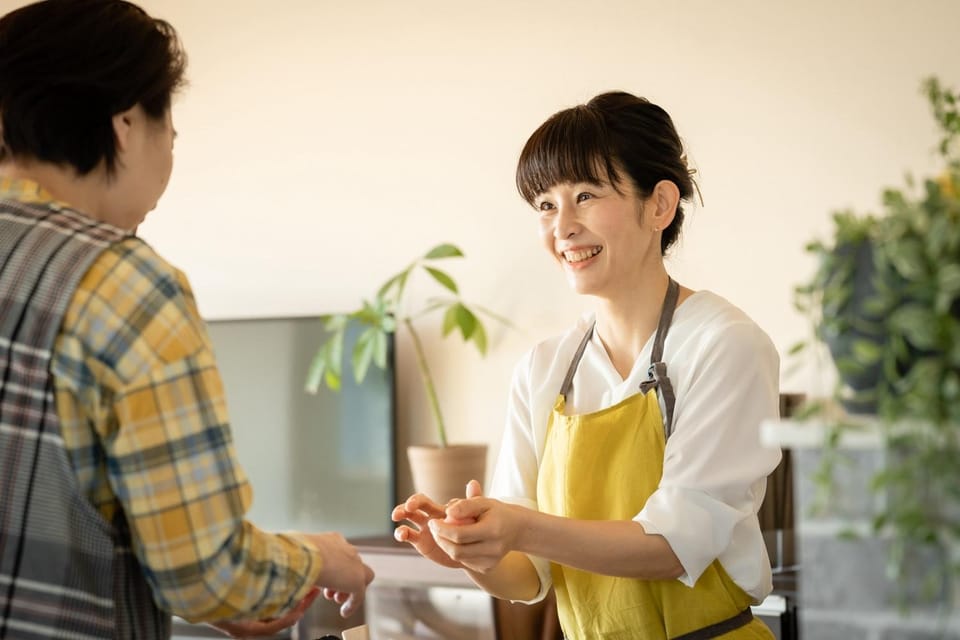
Enjoy a unique cultural experience with the Mindful Wagashi Making & Tea Ceremony, where participants engage in the art of crafting traditional Japanese sweets known as nerikiri.
Set in the serene Ikegami Baien garden near Haneda airport, this two-hour workshop allows individuals to create two beautiful nerikiris while enjoying a calming tea ceremony.
Guided by an English-speaking instructor, participants not only learn the craft but also appreciate the connection between the sweets and the changing seasons.
The experience includes a stroll through the garden, matcha tasting, and usage of an authentic tea room.
With a focus on mindfulness, this private group session encourages creativity and sensory engagement, making it an unforgettable journey into Japan’s culinary heritage.
It's also worth checking out some other tours and experiences nearby.
Mindfulness Practices Involved
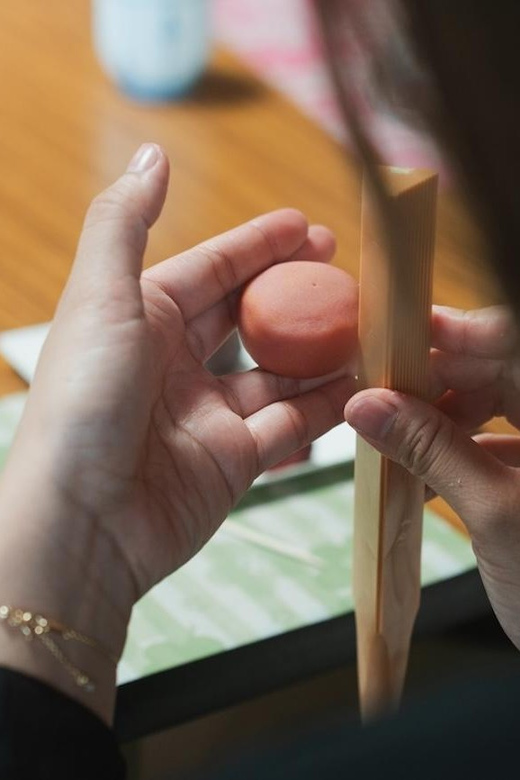
The Mindful Wagashi Making & Tea Ceremony integrates various mindfulness practices that enhance participants’ experiences. Attendees engage in meditation and self-introduction, fostering a deeper connection with themselves and their surroundings. By utilizing all five senses, participants enjoy the seasonal beauty of the Japanese garden while savoring matcha tea and traditional sweets.
| Mindfulness Practice | Description |
|---|---|
| Meditation | Focus on breath and presence. |
| Self-Introduction | Share personal stories to build connection. |
| Sensory Awareness | Engage senses through taste, smell, sight, touch, and sound. |
| Nature Connection | Appreciate the garden’s seasonal beauty. |
| Tea Ceremony Etiquette | Embrace the ritual and its calming effects. |
These practices not only enhance the experience but also promote overall well-being and tranquility.
Step-by-Step Wagashi Making
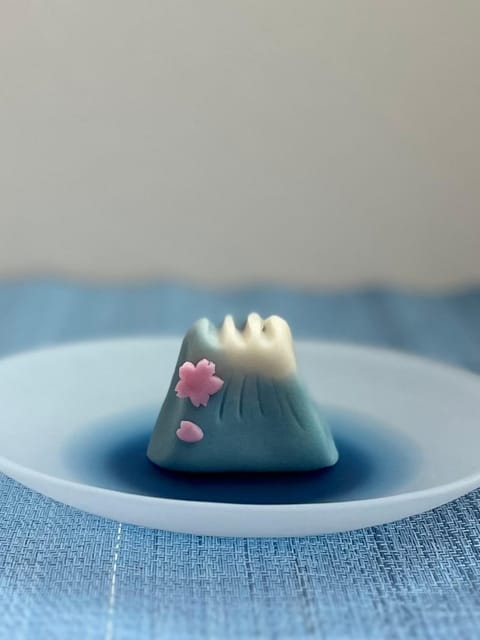
Wagashi making is a delightful blend of artistry and tradition that invites participants to create beautiful, edible pieces of art.
First, they prepare the dough using sweet azuki bean paste and rice flour, ensuring the perfect consistency. Next, they divide the dough into portions, coloring some with natural dyes to reflect seasonal themes.
Participants then mold the dough into intricate shapes, often inspired by nature, like flowers or fruits. Each creation is carefully crafted, showcasing individual flair and attention to detail.
Once finished, they add finishing touches, such as edible gold leaf or delicate patterns. This hands-on experience not only results in stunning sweets but also fosters a deeper connection to Japanese culture and culinary artistry.
The Tea Ceremony Process
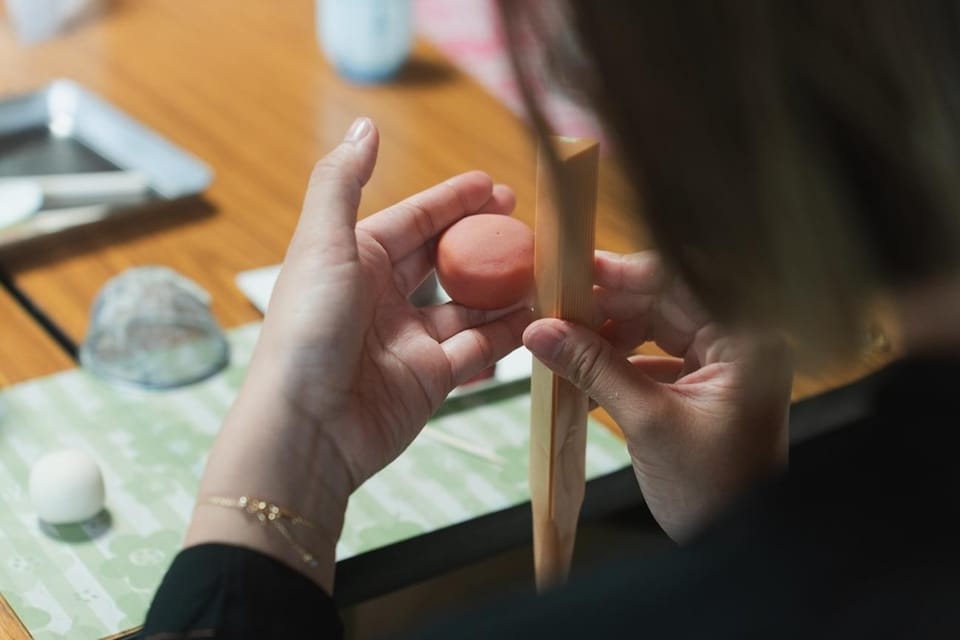
Participating in a traditional Japanese tea ceremony is a unique experience that transcends mere beverage preparation.
The process emphasizes mindfulness and respect, creating a serene atmosphere. Guests witness a series of deliberate actions, each filled with meaning.
Here are three key elements of the tea ceremony process:
-
Purification Ritual: The host cleanses the tea utensils, symbolizing the importance of purity and respect for your.
-
Matcha Preparation: The host skillfully prepares the matcha, whisking it to create a frothy, vibrant drink that embodies the essence of the ceremony.
-
Serving and Enjoying: Guests receive the tea with gratitude, savoring the flavors while appreciating the tranquil surroundings, fostering a deep connection with nature and each other.
What’s Included in the Experience
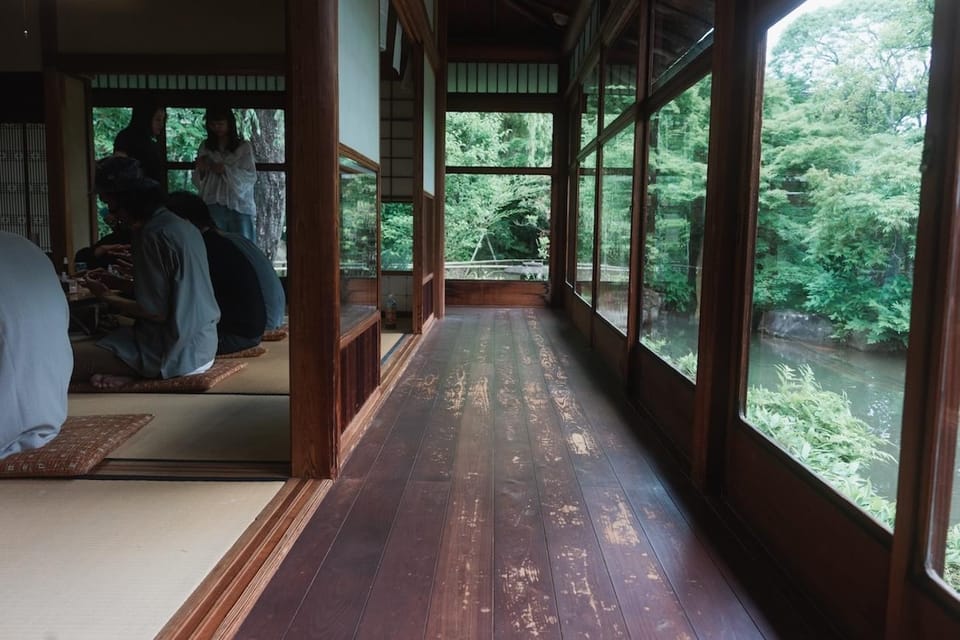
A delightful array of experiences awaits participants in this mindful Wagashi making and tea ceremony.
Attendees will begin their journey with a serene stroll through the beautiful Japanese garden, seeing nature.
They’ll then engage in the hands-on experience of crafting two traditional nerikiri sweets in an authentic tea room.
The experience also includes a calming tea ceremony, where participants savor matcha tea paired with their handmade sweets.
Each guest receives an English recipe to recreate the nerikiri at home.
Plus, the experience covers all necessary fees, including the tea room and garden entrance.
Aprons and hand towels are provided, ensuring everyone is ready to enjoy this unique cultural experience without hassle.
Important Participant Information
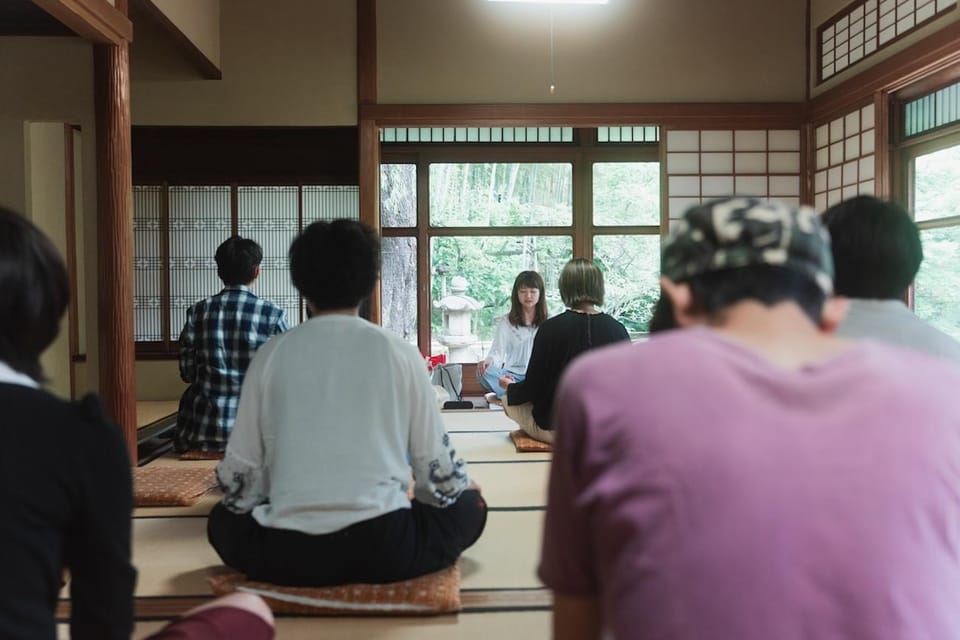
For those planning to join the mindful Wagashi making and tea ceremony, it’s essential to know a few important details before arriving. Participants should be aware of the following:
-
Meeting Point: Gather in front of LAWSON, just a minute from the South gate of Nishimagome station.
-
Age Restrictions: This experience isn’t suitable for children under 7, wheelchair users, visually impaired individuals, or those over 95.
-
What to Bring: Attendees should come with a camera and wear comfortable clothes, while pets, baby strollers, smoking, alcohol, and drugs are strictly prohibited.
Plus, handmade sweets are best enjoyed on-site, as taking them home is at one’s own risk.
Being informed guarantees a more enjoyable and seamless experience.
Tips for Your Visit
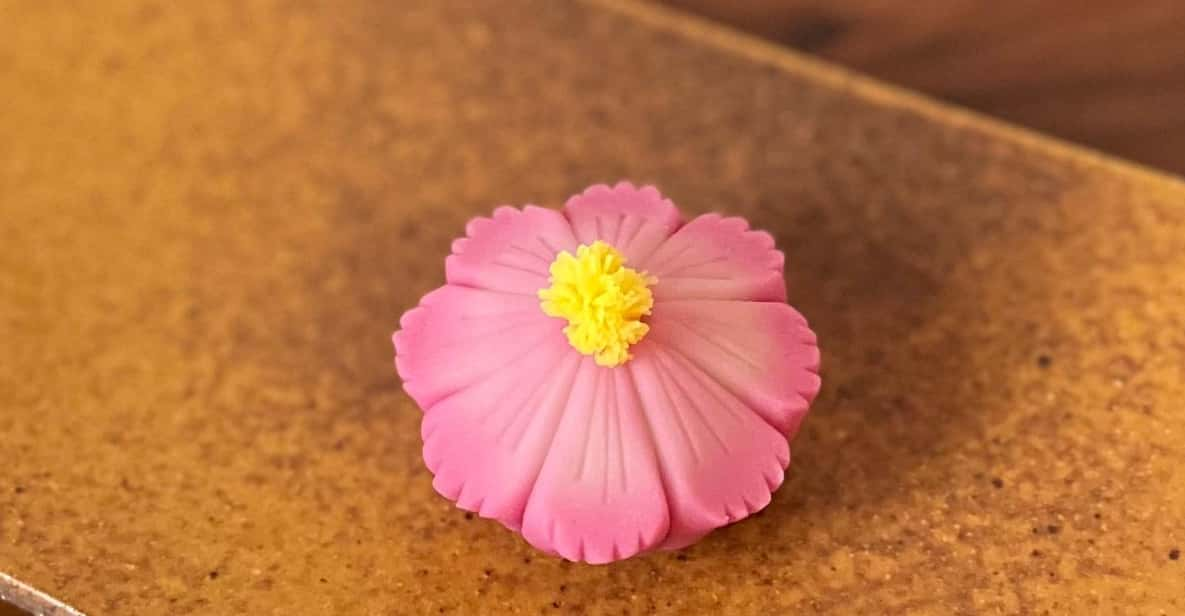
Knowing what to expect can enhance the overall experience of the mindful Wagashi making and tea ceremony.
Participants should arrive dressed comfortably, keeping in mind that they’ll be sitting on tatami mats—avoid short skirts for ease.
Bring a camera to capture the beautiful moments, but leave pets and strollers at home.
It’s important to check the availability of starting times and arrive punctually, as latecomers may face cancellation fees.
Enjoying the handmade sweets on-site is recommended; taking them home is at your own risk.
Finally, take a leisurely stroll through the Japanese garden after the session to fully immerse in its tranquil beauty.
These tips will guarantee a fulfilling and memorable visit.
Exploring Ikegami Baien Garden
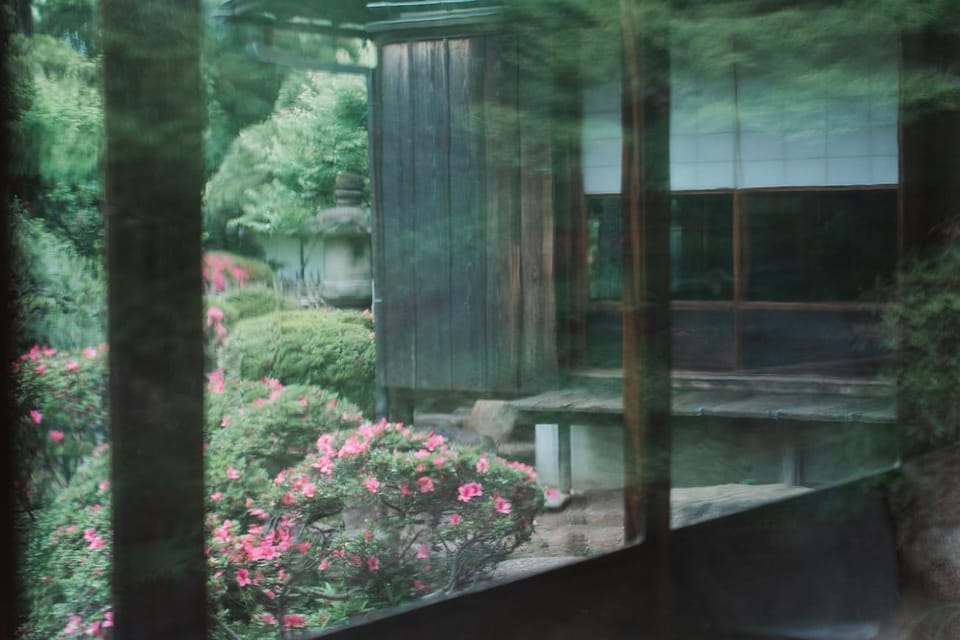
Visitors to Ikegami Baien Garden often find themselves captivated by its serene beauty and seasonal charm. Nestled near Haneda Airport, this hidden gem offers a tranquil escape where nature meets artistry.
Guests can enjoy various features, including:
-
Seasonal Blooms: The garden showcases beautiful cherry blossoms in spring and vibrant foliage in autumn, making each visit unique.
-
Traditional Architecture: Visitors can admire the authentic tea room and picturesque bridges that enhance the garden’s aesthetic appeal.
-
Mindfulness Opportunities: Ample quiet spots invite meditation and reflection, allowing guests to enjoy the surrounding beauty.
With its rich atmosphere, Ikegami Baien Garden provides the perfect backdrop for mindful wagashi making and tea ceremonies, creating lasting memories for all who visit.
Here's a few more nearby tours and experiences we think you'll like.
Frequently Asked Questions
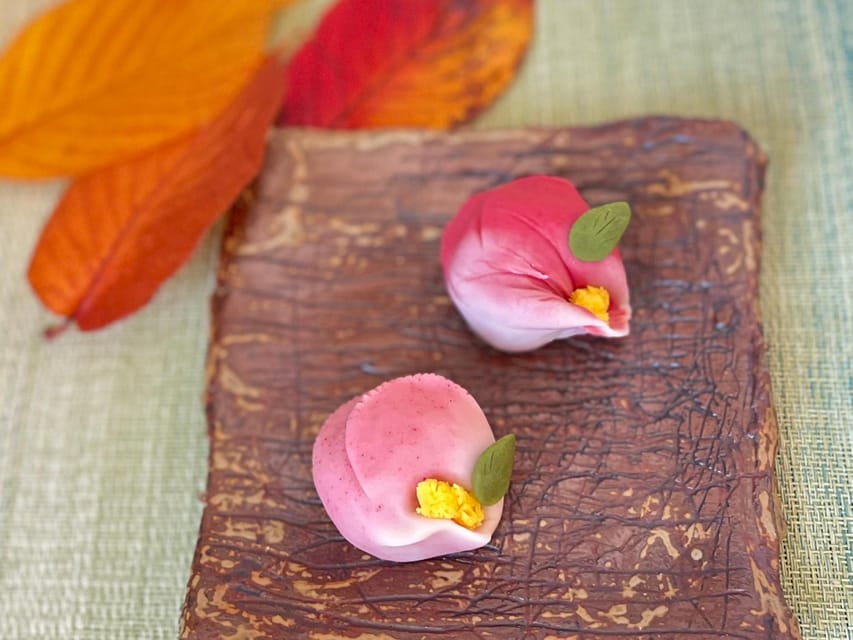
Is Prior Experience in Wagashi Making Required for This Activity?
No, prior experience in wagashi making isn’t required for this activity. Participants can enjoy learning from an English-speaking instructor, who guides them through the process, ensuring everyone has a fulfilling and enjoyable experience.
Can Dietary Restrictions Be Accommodated During the Tea Ceremony?
He asked if dietary restrictions could be accommodated during the tea ceremony. The instructor assured him they can cater to various needs, ensuring all participants enjoy the experience without compromising their dietary preferences or restrictions.
What Is the Maximum Group Size for the Private Experience?
The maximum group size for the private experience is typically up to ten participants. This allows for an intimate setting where everyone can actively engage and enjoy the traditional practices while receiving personalized attention from the instructor.
Are There Any Age Restrictions for Participants?
There are age restrictions for participants, as children under seven aren’t permitted. Plus, the experience isn’t suitable for individuals over 95, ensuring a comfortable and safe environment for everyone involved.
Is Photography Allowed During the Workshop and Tea Ceremony?
Photography’s allowed during the workshop and tea ceremony. Participants should capture the beautiful moments, but must respect others’ privacy and the space. It enhances the experience, creating lasting memories of the serene surroundings.
Not for you? Here's more of our most recent tour reviews happening neaby
- Mindful Wagashi Making & Tea Ceremony in Japanese Garden
- Tokyo: Mt. Fuji Wagashi & Tea Trial Tour in Japanese Garden
- Personal Cosmetics and Useful Goods Tour
- Tokyo: Fuji Wind & Ice Cave, Ninja Village & Hot Spring Tour
- Tokyo City Half-Day Cruising: Door-to-Door Transfer Service
- Downtown Tour: Sushi Experience, Edo Museum, Garden Tour
- Tokyo: Best Local Bar Hopping Tour in Shibuya!
- Tokyo: Guided Go Kart Tour From Harajuku to Shibuya Crossing
- Private Photoshoot in Tokyo
- Tokyo: Private Tokyo Tower and Night Food Tour 6pm
- Tokyo: Private One-Way Transfer Services From Narita Airport
- Tokyo: Sushi Cooking Class With Sake Tasting
- Tokyo: Real Sumo Morning Practice Tour at Yokozuna Stable
- Go Kart Tokyo Bay Route | High Adrenalin in 120 Minutes
- ●Tokyo via Mt. Fuji 5th Sta. Bus Transfer From Hirayu
Recap
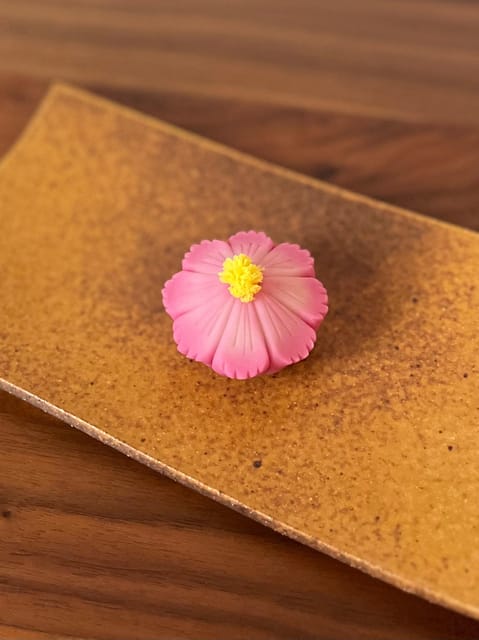
To sum up, the mindful wagashi making and tea ceremony at Ikegami Baien garden offers a unique blend of creativity and tranquility. Participants not only craft beautiful seasonal sweets but also enjoy the serene beauty of nature. This experience enhances mindfulness and appreciation for Japanese culture, making it a memorable outing. Whether you’re a novice or an enthusiast, this workshop promises to be a delightful journey into the art of wagashi and the rituals of tea.
